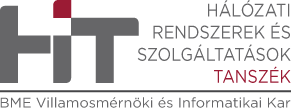Modeling and Analysis of 5G Mobile Backhaul
Task 1 Literature research
Guidelines
- overview legacy and 5G mobile architecture and services
to derive clear understanding of requirements for mobile
backhaul
- overview 5G backhaul enabling technologies to evaluate
the potential fulfilment of backhaul requirements
- milestones and schedule: (on weekly basis, to be discussed)
M1 legacy backhaul requirements (short presentation)
M2 legacy backhaul technologies and solutions (short presentation)
M3 5G backhaul requirements (short presentation)
M4 5G backhaul enabling technologies (short presentation)
- deliverable
minimum: integration of milestone presentations
preferred: technical report (to support further project
laboratory, and expected thesis work)
i.) General overview of mobile backhaul networking
- Legacy requirements, solutions (architecture and
technologies)
- Key issues
-- bandwidth, delay, synchronization, etc.
-- advances: cloud RAN, xhaul (functional splitting)
ii.) Overview of 5G architecture and services
- 5G architecture,
- 5G verticals,
- 5G based services,
- network splitting,
- edge computing
- 5G backhaul requirements, comparison to legacy backhaul
requirements
iii.) 5G backhaul enabling technologies
- NFV, SDN
- IP advances (e.g. Segment Routing)
- optical networking (DWDM, RoF)
Task 2 Network case study for 5G backhaul
- aims: apply general requirements for a subset of realistic
services
- focus: evaluation of some applicable solutions
- modelling approach (to be discussed)
- network specification (to be discussed)
- analysis to evaluate to fulfilment of some selected
requirements

